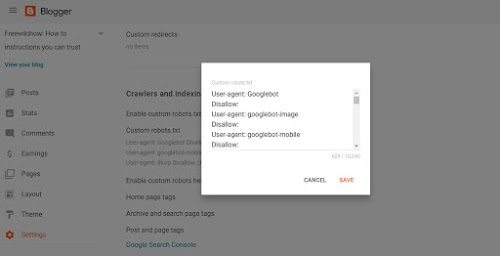What is XML sitemap?
The Search Engine uses its respective web crawlers (bots) to find pages from links within the site and from other sites. XML Sitemap is a .xml file attached to your website that provides crawlers with this data. The sitemap file is composed of all posts URLs with additional information about each URL. The Search Engine uses this data to index your posts as effectively as possible. Use of XML Sitemap file guarantees indexing of your web pages in search engines.
Problems with Blogger Sitemap files
All pages of the website should be mentioned in the complete XML sitemap file, but this is not the case if your blog is hosted on the Blogger or Blogspot platform. Google accepts site maps in XML, RSS or Atom format. To get the best crawl, they suggest using both XML sitemap and RSS/Atom feed.
Any blogger's default atom RSS feed will only have the most recent blog posts-see example. That's a limitation because some of your older blog pages may never be indexed in search engines, which are missing in the default XML sitemap file. However, there is a simple solution to this problem.
How To Generate XML sitemap for Blogger
This section is valid for regular blog authors (with the address of blogspot.com) and self-hosted blog authors using custom domains (such as wikihow.com).
You need to do the following to show the entire site structure of the blog to the search engine using the XML site map.
1]. Open the sitemap generator and enter the full address of the blog.
2]. Click the Generate Site Map button and this tool will immediately create an XML file along with your site map. Copy the entire text to the clipboard.
3]. Next, go to the Blogger.com information center, navigate to "Settings" -> "Search Preferences" and enable the option "Custom robots.txt" (available in the "Crawling and Indexing" section). Paste the XML site map here and save the changes.
We are done. The search engine will automatically discover your XML sitemap files through the robots.txt file, you don't need to ping them manually.
The XML sitemap generator internally counts all blog posts available in the blog. Then, it divides each batch of posts into 500 posts and generates multiple XML feeds for each batch. Since it will be one of these XML sitemaps, search engines will be able to discover every post in your blog.
If you switch from Blogger to WordPress, you can still apply the XML sitemap of the old Blogspot blog, because this will help search engines find new blog posts and pages for WordPress.


0 Comments